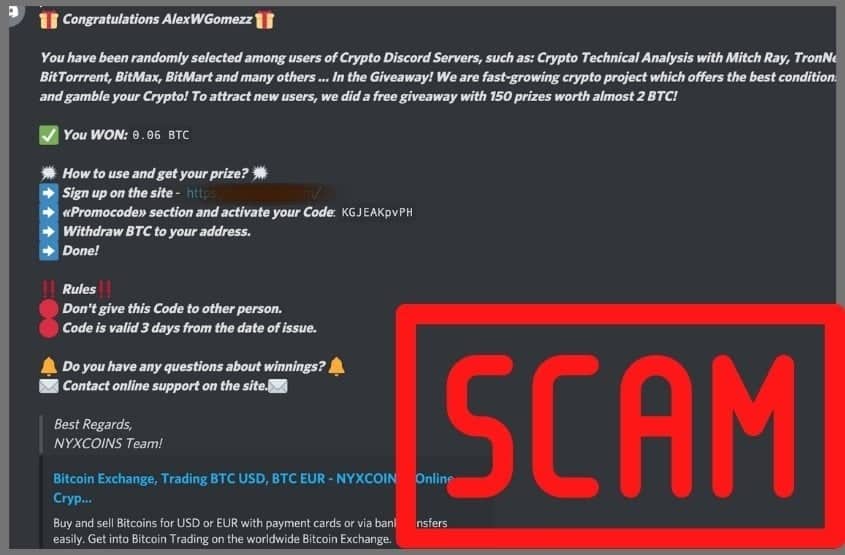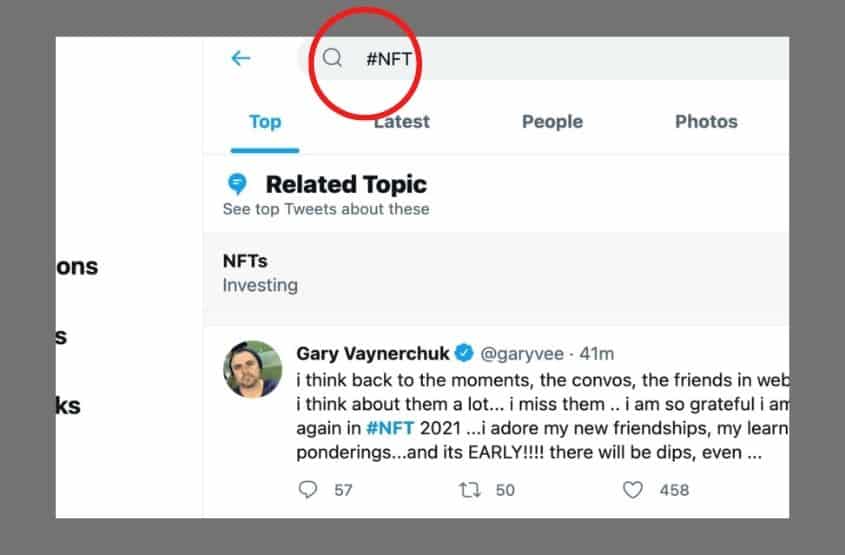It’s no big secret. Everyone is jumping at the opportunity of a lifetime—creating your own non-fungible token project and eventually dropping your NFT to the public so that people can buy them. An NFT drop is something you see every day, multiple times a day, so it’s important to understand all the different aspects surrounding drops.
What Is An NFT Drop?
One of the first questions I had, when I started buying NFTs, was what is an NFT drop? Being active on social media helped me realize exactly what an NFT drop is.
An NFT drop is the release of a non-fungible token project. A drop refers to the exact date, time, and generally the minting price of the NFT. Many NFT drops have purchase limits that apply to the number of NFTs you are able to mint in one transaction. Purchasing at drop time is a great way to save money as well.
NFT drops are abundant. As new brands and businesses begin to take advantage of this technology you will see even more drops.
Trust me, I understand that all the drops can be overwhelming. This leads me to my next point, there are some things you may want to avoid when buying an NFT drop.
Things To Avoid When Buying NFT Drops.

Browsing around for the next best non-fungible token project can be extremely exciting, however, there are some things you should avoid when going all-in on an NFT drop:
- Avoid buying NFTs that you don’t actually enjoy.
- Avoid buying a drop before doing your own research.
- Avoid becoming victim of a scam.
- Avoid drops that aren’t within your budget.
- Avoid purchasing drops just because they’re affordable.
I understand that it can be very tempting to buy into a new drop. The fear of missing out (FOMO) is enough to make you mint your entire paycheck away, but trust me—that’s not the way. There is a right and wrong way to buy an NFT drop, so let’s get down to the nitty-gritty of what you should avoid when acquiring your digital asset on drop day.
Avoid buying NFTs that you don’t actually enjoy.
Buying a digital asset is much more than buying the metadata that comes with an NFT. When you are hunting for your next drop, make sure it’s something that you really enjoy.
Similarly to when you buy your favorite brands of clothes, you’re better off obtaining NFTs that you really like. Ask yourself — “why do I like this NFT?” If you can answer this question honestly and still feel good about your purchase, then it’s a win-win situation.
Here are some of the questions I ask myself when deciding if a new NFT drop is right for me:
- Is the NFT visually pleasing and up to my standards?
- Do I support the brand and their mission?
- Can I afford to purchase this NFT?
- Will I be upset if I don’t make any money from this non-fungible token?
Answering these few simple questions honestly can help you determine if the newest NFT drop is right for you.
Avoid buying a drop before doing your own research.
Ensuring you do your own in-depth research on any NFT drop is crucial. If you don’t do your research, the chances of buying an enjoyable token are diminished. When you buy an NFT, you’re buying the brand. It’s not any different than when you buy pair of shoes.
First, you look for a brand that you know and trust, then you find a pair that are visually appealing, and lastly, you try them on to make sure they are what you’re looking for in terms of functionality, style, and value. In my opinion, searching for NFTs should be a similar process.
Investigating the creators and the entire team behind an NFT brand will help you better understand the authenticity of a drop. If the creators are trustworthy people with a good reputation then you can buy confidently knowing you aren’t being scammed. On the other hand, if you can’t find much information about the developers and creators, especially with a new brand, approach the drop with caution.
Avoid becoming victim of a scam.
Knowing exactly what you are buying on the blockchain is a serious matter. If you aren’t doing your own personal research then you likely have no way of verifying what it is that you are buying. There are many ways people can make a few quick dollars off an unsuspecting victim. That is why I preach the importance of doing your own investigating.
There are a multitude of scams that you could easily fall victim to if you’re not careful. Here are some common scams that are experienced in the NFT space:
- Rug Pull–
A rug pull is when someone creates a project with the intention of making money and then quickly abandoning the entire project, brand, and the community.
Rug pulls can easily be detected by spending time in the community of the project. Spaces such as discord, social media, and other communication platforms are excellent for getting a sense of how active a brand is. If the brand isn’t active and sincere with their efforts, then you may want to do some more snooping before deciding to go all-in. - Fake Sites–
Fake sites can be detrimental to your digital assets. Fake sites can hide in plain sight on the internet—the site may have the same appearance as the real site and it may even be spelled similarly, but instead of an NFT drop, it’s actually a site that can steal all you assets once you connect your wallet. Always double check the URL and DO NOT visit any sites you don’t trust. - Fake Brands-
Fake brands are similar to fake sites. Scammers will create a fake brand with counterfeit NFTs which look identical to the real brand. You may find these fake brands listed on the marketplaces and social media. Always ensure you are purchasing from the correct brand name. - Direct Messages–
Whether you’re on social media, in a chat group, or catching up on your emails, scammers can reach out to you claiming to be something they’re not. If you ever receive a DM saying you have randomly won a prize of any kind, avoid the message at all costs.
If anyone messages you with any sort of offer or request, be very weary. Never give out your secret phrase or any personal information. You’d be surprised how many folks fall for this type of scam.
Avoid drops that aren’t within your budget.
It can be tempting to invest money into a project, especially if you have done your own in-depth research and believe it is a project worth taking a risk. That being said, I do not advise you to invest more money than your budget allows.
In fact, you should never invest more money than you can afford to lose. There are no guarantees on any one NFT brand succeeding so it’s wise to go into a project with the mindset that you may lose all your money. If you can’t afford to lose it, don’t spend it. You can thank me later.
You may want to consider creating additional savings account specifically for NFT investments, this way you know you can afford to lose the money in the worst-case scenario.
Avoid purchasing drops just because they’re affordable.
Just because you can afford to buy an NFT doesn’t mean you should. As digital assets become more common in everyday life, their value may go down if the demand can’t keep up. Again, that is why you must research every NFT brand you plan on seeing a return on your investment.
If you genuinely enjoy a project simply because it appeals to you, then, by all means, buy it if you are able to. Otherwise, save up your money for something you really want.
Where To Find NFT Drops.

If you think finding an NFT drop is difficult, it’s not. With that being said, there are plenty of places where you may discover various drops occurring across the web.
Here are some of the best places to find an NFT drop.
| Where To Find NFT Drops | Types Of Drops. |
|---|---|
| Social Media (Twitter, Instagram, LinkedIn, YouTube, Clubhouse, Facebook, etc.) | Social media drops will provide a broad selection of drops. From big brands to solo artists, you’ll find it all. Make sure to follow others who interact with the NFT community. |
| Instant Messaging (Discord, Social Media) | Discord and similar platforms are superb places for uncovering new drops. It’s common to find people talking about other drops in a branded discord room. |
| Word of Mouth (make some friends, tell some friends) | Word of mouth is still one of the best ways to come across some really cool drops. Make friends with other folks in this space and make sure to share your knowledge with your friends. |
| Metaverse (all the virtual worlds, such as Decentraland) | The metaverse is an exciting place to discover new NFTs. These digital tokens are posted all over the metaverse for your viewing pleasure. |
| Marketplaces (OpenSea, Rarible, Candy, SuperRare) | Marketplaces such as OpenSea have drops highlighted daily. Another tip is to check the rankings on the marketplace and see what has been trending. |
| Podcasts | Podcasts that talk about relevant info, for example; marketing, technology, and investing will likely talk about NFTs. Some good examples of these podcasts are The GaryVee Audio Experience and Modern Finance. |
Finding A Good NFT Drop.
Trying to find a good NFT to invest in can be similar to finding a needle in a haystack. Thankfully, there are some key signs which may help you find the best NFT drop for you.
When searching for a good NFT to invest in, first find a project you like and support. Once located, ensure you do your own personal research and use your intuition. Researching an NFT project is as easy as observing the community, creators, and the brand they are trying to build.
There’s a bit more that goes into finding a solid NFT worth buying but don’t stress, you can learn everything you need to know about finding good NFTs right here: Finding Good NFTs To Buy: A Collector’s Buying Guide.
NFT drops are similar to a business’s opening day. They take advantage of marketing tactics and advertising across multiple platforms. Moreover, brands may use NFTs to release a new collection to build on top of their current brands. This is no different than Nike releasing a new pair of sneakers. You buy the sneakers on drop day and either keep them or flip them for a profit. Ultimately, the choice is yours.
Do your research, invest in things you love, and don’t risk more than you can afford to lose.

7 thoughts on “What Is An NFT Drop? NFT Drops Explained.”
Comments are closed.